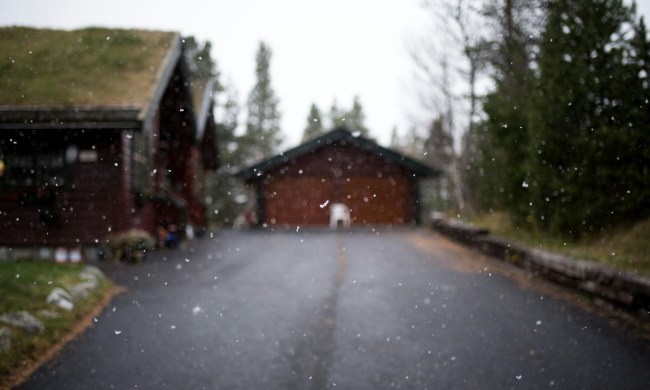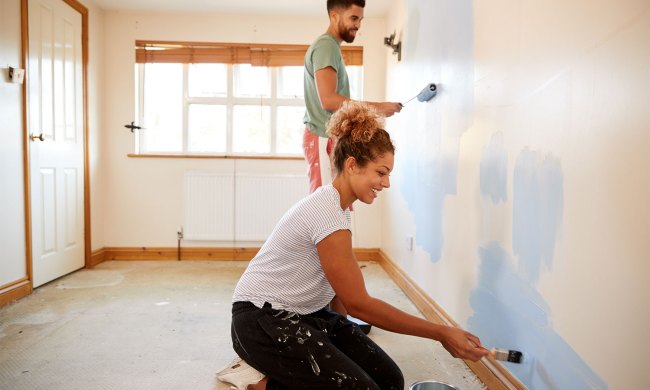Updating your living space doesn’t have to cost a lot of money. You may be surprised at how little you need to spend to make your home feel newer and fresher. With minimal effort, you can come home to what feels like a new place and enjoy what you have even more.
Most of our suggestions take a little work, so make sure you have a decent screwdriver, effective cleaning products, and a ladder handy to get the job done. We highly recommend investing in a cordless power drill. It makes hanging pictures, putting together furniture, and replacing hardware so much easier than a manual screwdriver. Make sure you have a set of drills and tips to go with it, and you can conquer nearly every small project in your home. Ready? Here we go.

Update your kitchen cabinet hardware
It may not seem that way, but changing your cabinet hardware can have a transformative impact on your kitchen, states Apartment Therapy. You can add color, style, and great design by choosing new knobs and pulls, and if you’re feeling ambitious, you can switch the hinges, as well.
There are more varieties and designs to pick from than ever, and with materials like natural agate stone, painted ceramic, wood, and even LEGO-type knobs, you can have fun with your new kitchen’s look. If you decide to upgrade your cabinet hinges, make sure you seek out proper instructions, so you have no headaches afterward.

Change your outlet covers and switch plates
You use them every day, you look at them but don’t see them, and they are integral to your home: Light switches and electrical outlets. If you’re change your outlet, The Spruce advises, “Never install a 20-amp receptacle on a 15-amp circuit.”
If your home is new, they may all match, but you may want a more personal touch. If your home is old, they all may not all match from being individually replaced over the years.
The way to tackle these is to do one room at a time. You can even choose a different design for each room — the possibilities are endless, as are your choices. From painted to 3D printed, decorative metal, and wood, there is a light-switch plate to suit everyone’s taste.
Outlet cover designs tend to be a bit more conservative, but replacing them all with fresh ones adds a polished look to your home. You may think that you won’t notice the change, but you will.

Add an accent wall
Painting one wall of a room or rooms can add interest to the windows and furniture near it and adds style and drama without a ton of effort. Pick a vivid accent color and go to town. One of the advantages of just painting one wall is that the taping goes quickly (make sure you tape your edges well), and usually, a quart of paint is enough to cover it. If there is a dark color already, you’ll need to put at least one coat of primer on it first, then paint your new color.
Once you decide to paint, there’s nothing wrong with getting samples and painting a swatch right on the wall. That method will help you visualize how it will look when you’re finished.

Change your lighting
Changing your lighting might sound expensive, but there are some tricks that you can employ to get it done on the cheap, or at least for far less money than buying straight retail. Thrift stores, consignment shops, and flea markets are all potential gold mines when it comes to finding interesting and eclectic lamps and shades. Often the “backroom” of furniture stores has mismatched lamps, and many people on Etsy make custom shades for a custom, one-of-a-kind look. Additionally, table and floor lamps offer a much warmer and friendly light than overhead lights and lend a homey and comfortable look.
Swapping out a hanging lamp in the dining room isn’t a challenging project, either. You can add a personal touch to the design of the room by finding an inexpensive teardrop fixture, or contemporary chandelier to liven up your dining space.

Add slipcovers to your furniture
Slipcovers are not what they used to be, and we mean that in a good way. When once they were expensive unwieldy chunks of fabric, now they are made from stretchable spandex and polyester. The stretchiness makes it easy to fit smoothly on your upholstered sofa or chair, and the fabric care is a breeze. They come in several different colors so that you can change the whole character of your room for a small fraction of the price of new furniture.
Declutter your home
Old mail, books, papers, and everyday items accumulate on your horizontal surfaces, and before you know it, your home looks lived-in. Now, that’s fine, but once in a while, you need to clean it up. You can’t easily dust around piles of clutter, so it becomes not only untidy but also dusty. Take a couple of hours and put things in their place. Invest in a paper shredder to rid yourself of old bills that you’re hesitant to throw in the recycling. Having a file cabinet in your home is an excellent organizational tool, and they can be attractive and unobtrusive. And if you find that you need more storage, add an ottoman or set of modular shelving to stay organized.
Clean your windows
It might sound far-fetched, but clean windows make your home look very different. The light coming in is brighter, you can see out better, and the clean glass expands your living space. Make sure you use a streak-free cleaner, and here’s a life hack: Scrunch up some newspaper and polish your windows with it once they are clean. The superfine powder on the paper leaves a bright streak-free coating that will help them stay clean longer.
Giving your home a makeover is hugely satisfying and can be done for very little money. By making an effort to transform your living space, you are also giving yourself a lift that you will enjoy for a long time.



